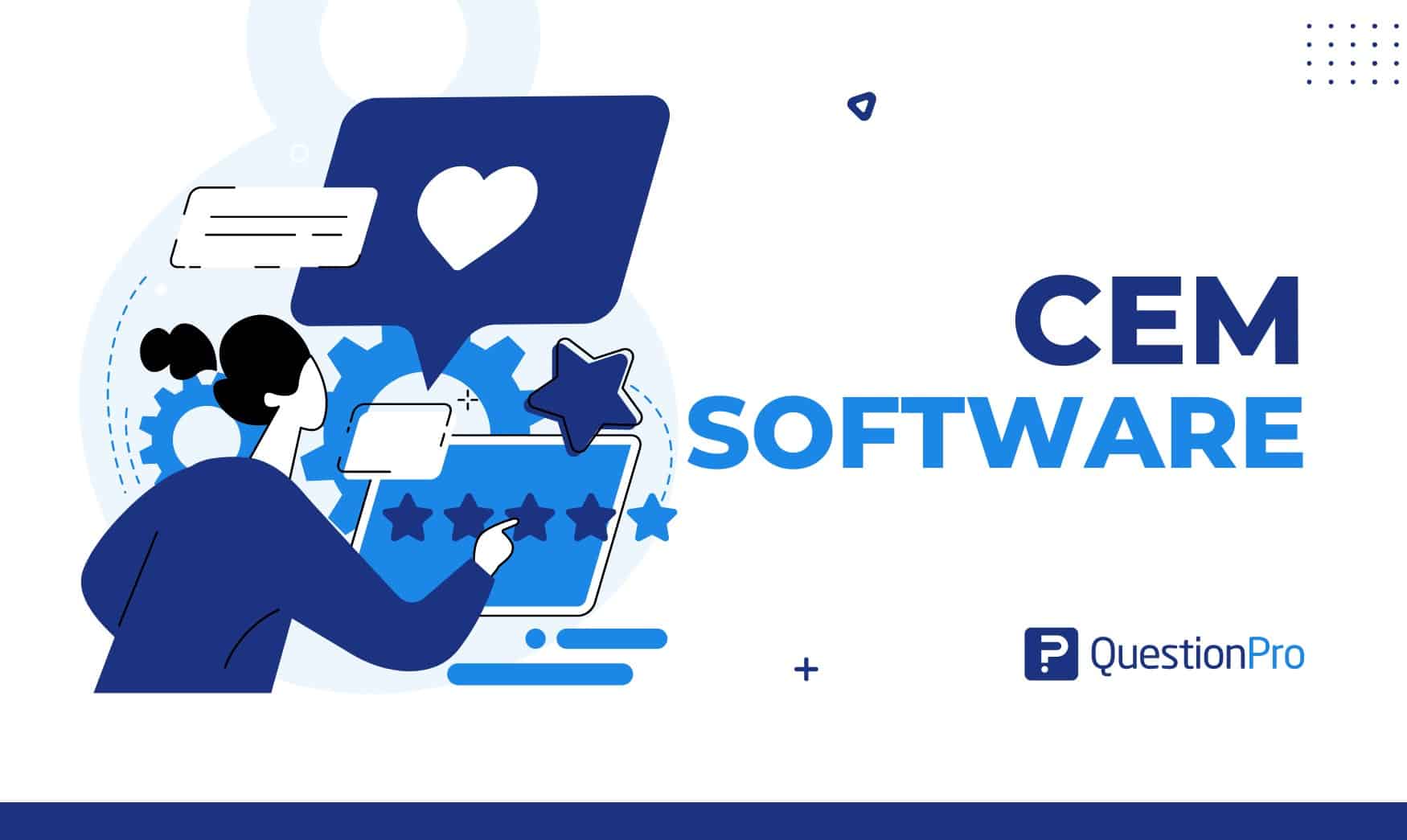
Any well-established company knows that consistency is key to building trust with customers. When customers face inconsistencies in the customer experience, such as conflicting information or different levels of service quality, they may question the reliability and credibility of the brand. This can lead to confusion and frustration among the customers, tarnishing their perception of the brand. A brand perceived as unreliable or untrustworthy is in trouble. Let’s learn how to improve it by implementing a tool that has become key in the growth and success of companies: CEM Software.
Customer experience management software helps organizations deliver consistent experiences across every step in the customer journey to ensure that customers get the same experience regardless of how they interact with the brand.
However, choosing the ideal platform that suits your needs can be complex given the wide offer on the market, which is why we decided to create a list with what we consider the best 7 CEM Software of 2025 so you can make a decision. informed according to your needs.
Due to the lack of access to relevant customer data and insights, businesses often struggle to make informed decisions about their products, services, and marketing strategies. This can lead to missed opportunities and suboptimal outcomes, as decisions are based on assumptions rather than actual customer needs and preferences. To avoid this, collecting and analyzing customer feedback and data from multiple sources is necessary, and that is where the use of CEM software becomes an important part of any company’s growth.
But let’s start with the basics.
What is CEM Software?
CEM software (Customer Experience Management Software) is a suite of tools and technologies that companies use to manage and optimize customer interactions. It can include features like customer data collection, analysis, and action. The general objective of this type of tool is usually to understand and improve the overall customer experience.
Also, CEM software enables businesses to analyze customer sentiment, track customer journeys, and predict future behavior, allowing for proactive decision-making and personalized interactions. Ultimately, CEM software is crucial in helping businesses build stronger customer relationships, foster loyalty, and drive long-term success in today’s competitive market landscape.
Good CEM software technology is just one part of the system that makes the implementation of such strategies a success. Additionally, operational adjustments are needed, such as defining key metrics, engaging human resources, and integrating with existing systems within the company.
Metrics of CEM Software to Measure
Customer Experience Management (CEM) software allows businesses to track various key metrics to measure the effectiveness of their customer experience initiatives. Some of the critical metrics typically measured with CEM software include:
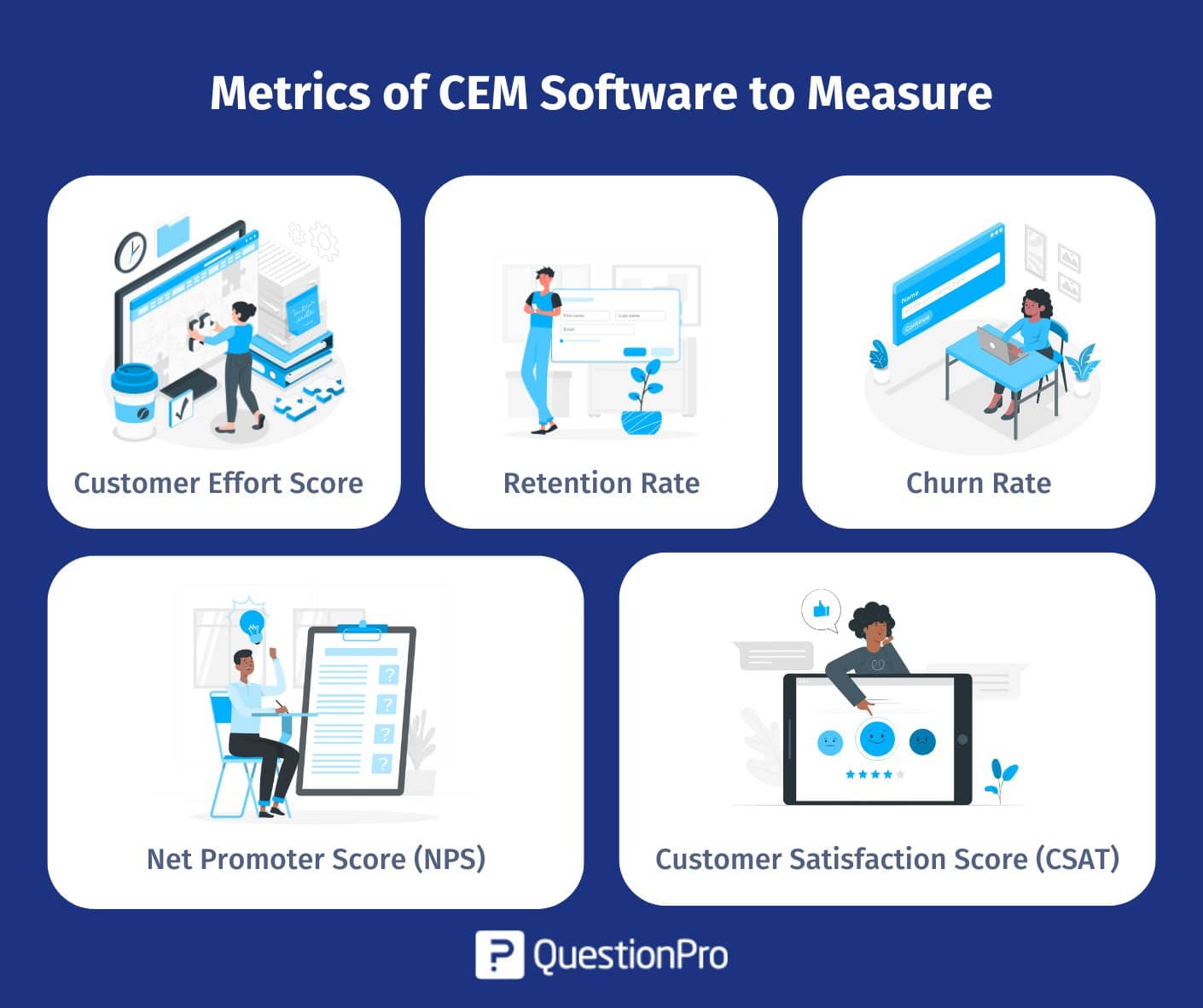
Customer Effort Score:
Customer Effort Score (CES) quantifies the simplicity of customers’ interactions or task completion with a company, indicating the efficiency and effectiveness of its processes and services.
Unlike traditional satisfaction surveys, which focus on how happy customers are with a product or service, CES measures the effort customers exert to achieve their goals. This could include tasks like finding information on a website, contacting customer support, or purchasing. The idea is that the easier it is for customers to accomplish these tasks, the more likely they will have a positive experience and remain loyal to the company.
Businesses use CES to identify pain points in the customer journey and streamline processes to make them more efficient and convenient for customers. By reducing customer effort, companies can improve overall satisfaction and loyalty, as customers are less likely to feel frustrated or discouraged by complex or time-consuming tasks.
Retention Rate:
This metric tracks the percentage of customers who continue to do business with a company over time. It serves as a vital gauge of customer loyalty and the general robustness of customer relationships.
Churn Rate:
This metric measures the percentage of customers who stop using a company’s product or service over a specific period. A high churn rate may suggest problems with satisfaction or the quality of the customer experience.
Companies often focus on improving customer satisfaction, loyalty, and retention strategies to reduce churn rates. This could involve offering incentives to encourage customers to stay, providing exceptional customer service, or addressing common reasons for customer dissatisfaction.
Net Promoter Score (NPS):
Net Promoter Score (NPS) measures the likelihood of customers recommending a company’s product or service to others. It’s a valuable indicator of overall customer loyalty and satisfaction.
Usually, it is based on a single question where it’s possible to gauge the degree of satisfaction based on, as mentioned, the likelihood of recommendation on a scale from 1 to 10. With these responses, users are categorized into promoters, neutrals, and detractors, and a scale ranging from -100 to 100 is created, establishing an overall organization score. This question can be asked in a general scenario but can also be used to evaluate specific moments within the customer journey.
Additionally, methodologies like NPS+ allow for further exploration of what people perceive about our services and attention to better identify opportunities for improvement and take action to enhance customer satisfaction scores.
Customer Satisfaction Score (CSAT):
CSAT measures customers’ satisfaction with a specific interaction, transaction, or experience. It’s usually assessed through post-interaction surveys.
Companies often use CSAT surveys to collect customer feedback by asking them to rate their satisfaction on a scale, usually from 1 to 5 or from “very unsatisfied” to “very satisfied.” This feedback helps businesses understand what they’re doing well and where to improve to meet customer needs and expectations better.
For example, a restaurant might use CSAT surveys to find out how diners felt about their meal and service, while an online retailer might use them to gauge satisfaction with the ordering process and delivery.
These key metrics and others specific to the business and industry provide valuable insight into the effectiveness of customer experience management efforts and help drive continuous improvement. Therefore, it’s important to remember them, especially if you’re beginning to implement technologies like CEM software within your organization.
Key Features of CEM Software
CEM software empowers organizations by providing insight into customer preferences, pain points, and satisfaction levels. It enables them to customize their services, products, and marketing strategies to better meet customer needs.
Key features of CEM software typically include:
Feedback management:
Gathering feedback through surveys, reviews, and other channels to understand their perceptions and expectations.
Sentiment analysis:
This involves analyzing customer sentiment from various sources, such as social media, reviews, and customer service interactions, to gauge overall satisfaction levels.
Learn more about this information analysis method by reading our article: Sentiment Analysis
Customer Journey Mapping:
Customer journey mapping out the entire customer journey to identify touchpoints, pain points, and opportunities for improvement throughout the customer lifecycle.
Predictive analytics:
Using data analytics to predict future customer behavior, preferences, and trends enables proactive decision-making and personalized customer interaction.
Omnichannel support:
Providing seamless experiences across multiple channels and platforms, ensuring consistency and continuity in customer interactions.
Actionable insights:
Translating data into actionable insights and recommendations that drive product, service, and process improvements to meet customer needs.
Overall, CEM software solutions are crucial in helping businesses build strong customer relationships, drive loyalty, and ultimately achieve long-term success in today’s competitive market.
Top 7 Best CEM Software in 2025
As we mentioned at the beginning of this article, choosing the best CEM software for your business is not an easy task, and we recommend taking the time to thoroughly evaluate the features and aspects offered by the different options available in the market.
We have created a list of the industry’s leading platforms to serve as a great starting point in your journey to improve customer satisfaction. We hope it will be of great help!
1. QuestionPro
The best CEM software in the market, if we say so ourselves QuestionPro. Our survey solutions are designed to identify pain points and areas for improvement in the customer journey by addressing issues quickly and proactively, leading to higher levels of customer satisfaction and loyalty. Gather valuable customer feedback and insights so businesses can make informed decisions to enhance greater customer satisfaction.
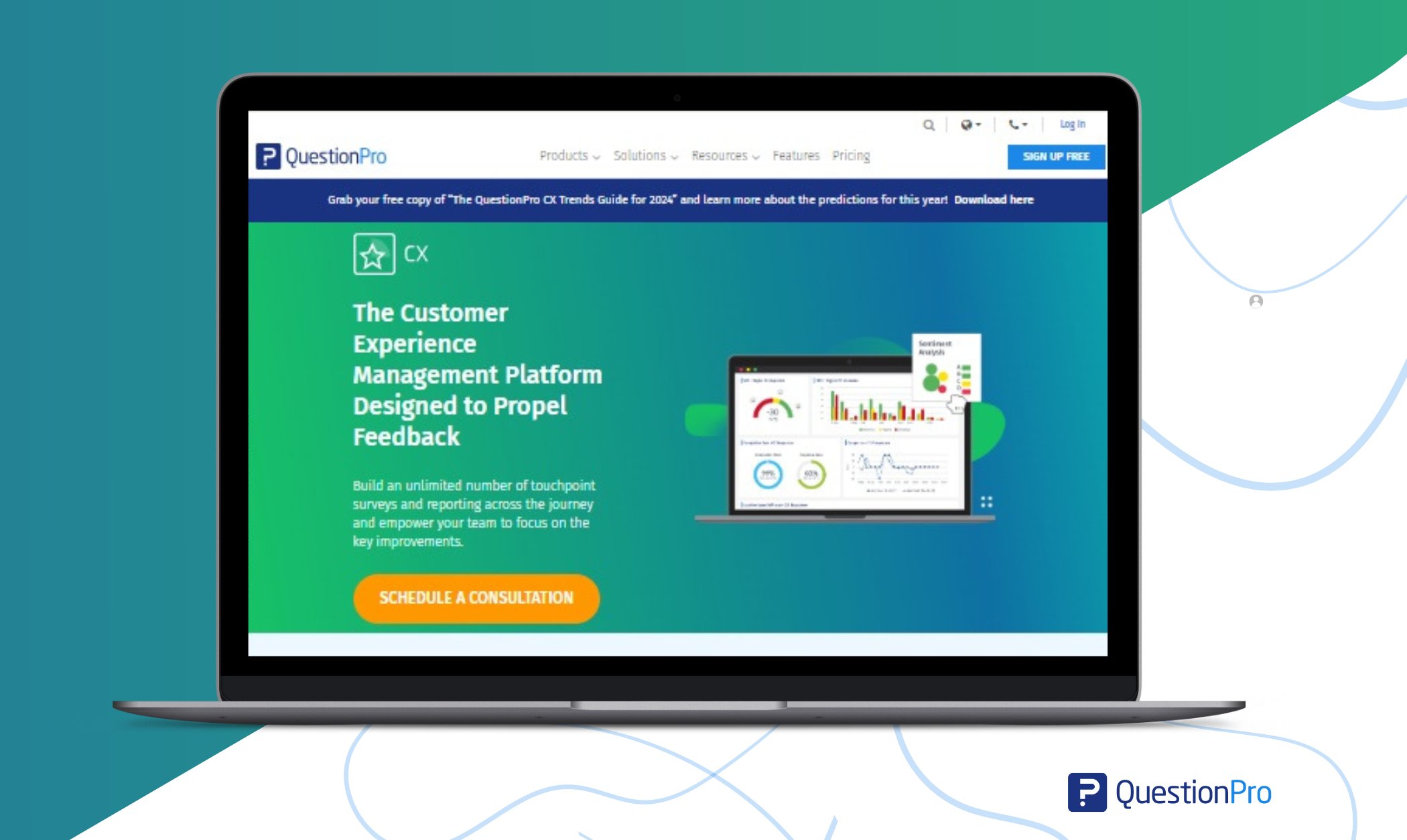
Features:
- Surveys and feedback collection
- Analytics and Reporting
- Customer journey mapping
- Integration with CRM systems
- Multi-channel feedback collection
Pricing: Most popular plans start at $99 per month, with pricing tiers available for businesses of all sizes. Custom pricing options are available for enterprises with specific needs.
2. Medallia
Medallia is a CEM platform organizations to capture, analyze, and act upon feedback across multiple channels, enabling businesses to deliver exceptional experiences and foster customer loyalty.
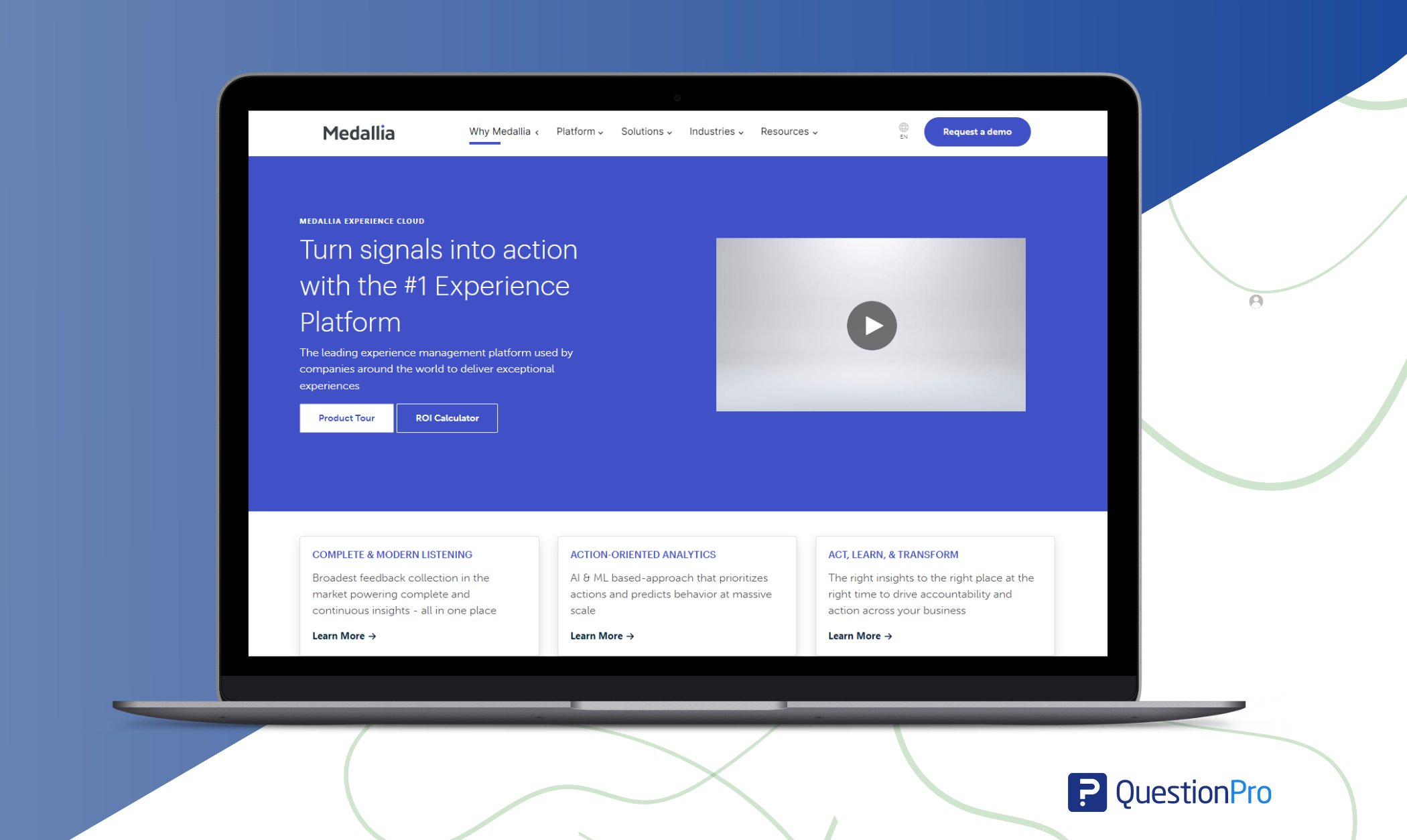
Features:
- Customer feedback management
- Sentiment analysis
- Journey mapping
- Predictive analytics
- Actionable insights
Pricing: Pricing is available upon request and typically tailored based on the size and requirements of each organization.
3. Qualtrics
Qualtrics is a renowned for its robust CustomerXM suite, Qualtrics provides powerful tools for measuring and improving customer experiences through actionable feedback and sentiment analysis insights.
Features:
- Voice of the Customer (VoC) programs
- Customer feedback management
- Experience optimization
- Journey mapping and analytics
- Integration with CRM and other systems
Pricing: Pricing varies depending on the edition and features required, with plans typically starting from around $1,500 to $2,500 per year. Provides custom pricing based on the needs and scale of the organization.
4. InMoment
InMoment is focusing on customer-centric solutions, InMoment offers advanced CEM software designed to drive meaningful engagement and loyalty by understanding and addressing customer needs and preferences.
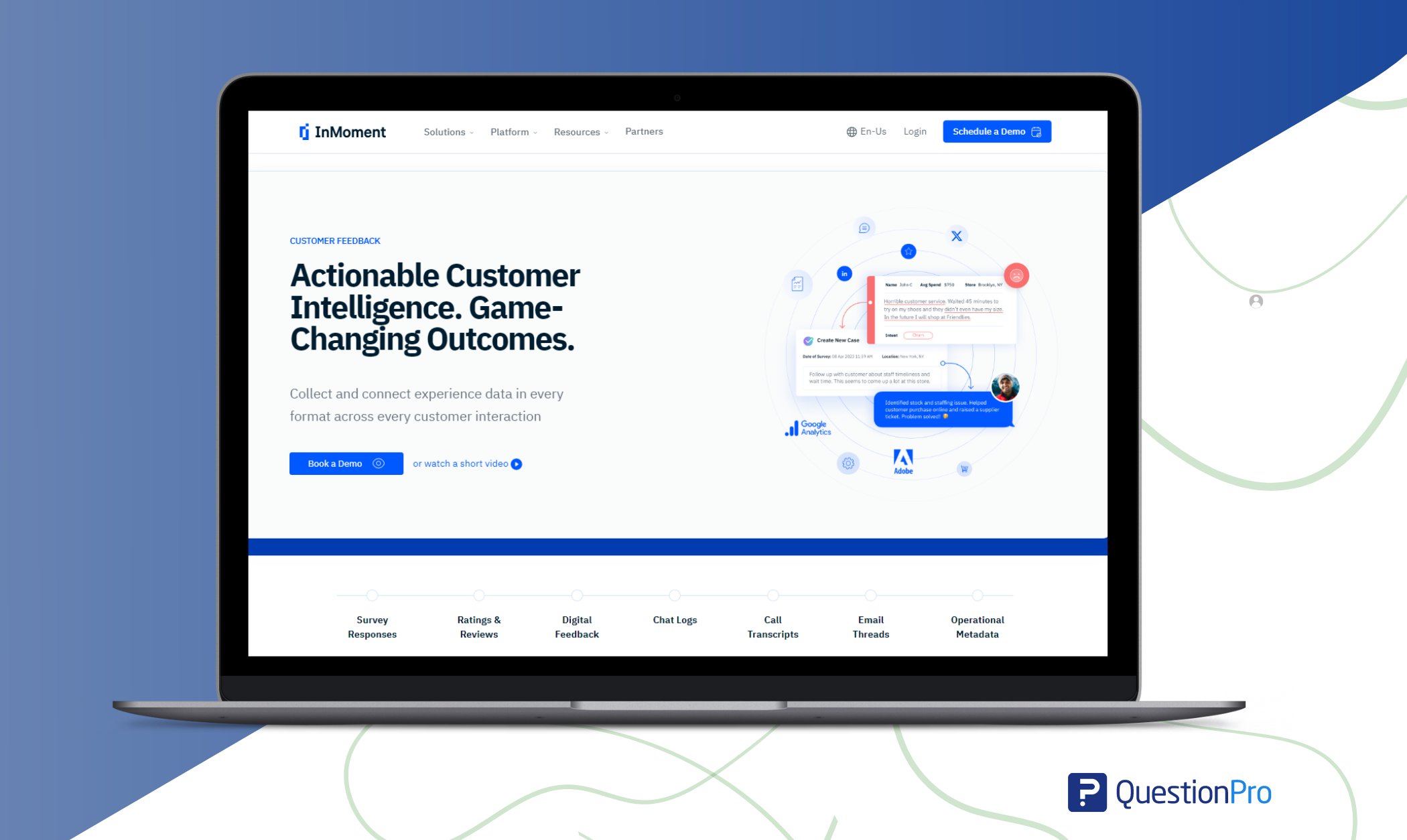
Features:
- Customer feedback collection
- Sentiment analysis
- Journey mapping and customer analytics
- Action planning and follow-up
- Integration with CRM and other systems
Pricing: Provides various pricing plans based on data volume and features, with custom pricing for enterprise feedback solutions.
5. Zendesk
A comprehensive customer service platform with CEM capabilities, Zendesk enables businesses to manage customer interactions efficiently across various channels, enhancing overall satisfaction and loyalty.
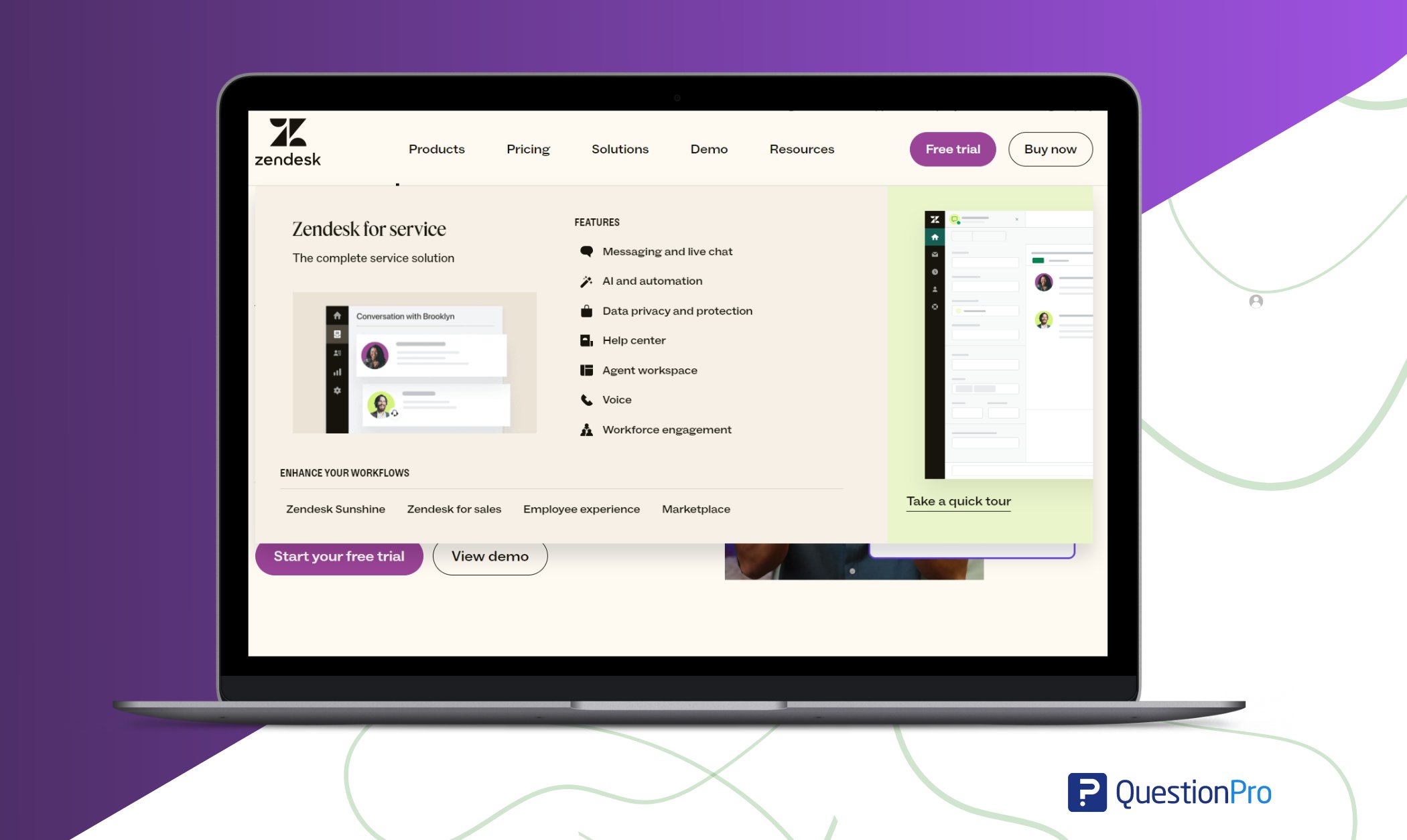
Features:
- Ticketing system for customer support
- Knowledge base management
- Live chat and messaging
- Customer satisfaction surveys
- Analytics and Reporting
Pricing: Pricing starts at around $5-$19 per user per month for the Support Suite, with additional costs for other features like Chat, Talk, and Explore. Custom pricing is available for larger enterprises.
6. HubSpot Service Hub
Part of the HubSpot suite, Service Hub offers an intuitive CEM platform to streamline customer support processes, gather feedback, and deliver personalized experiences to drive customer retention and advocacy.
Features:
- Ticketing and helpdesk system
- Knowledge management software
- Live chat and conversational bots
- Customer feedback collection
- CRM integration
Pricing: The starter plan starts at around $50 monthly, with additional features available in higher-tier plans starting from $400 monthly.
7. Zoho Desk
Zoho Desk provides a user-friendly CEM platform that helps businesses deliver seamless customer support experiences through ticket management, self-service options, and insightful analytics for continuous improvement.
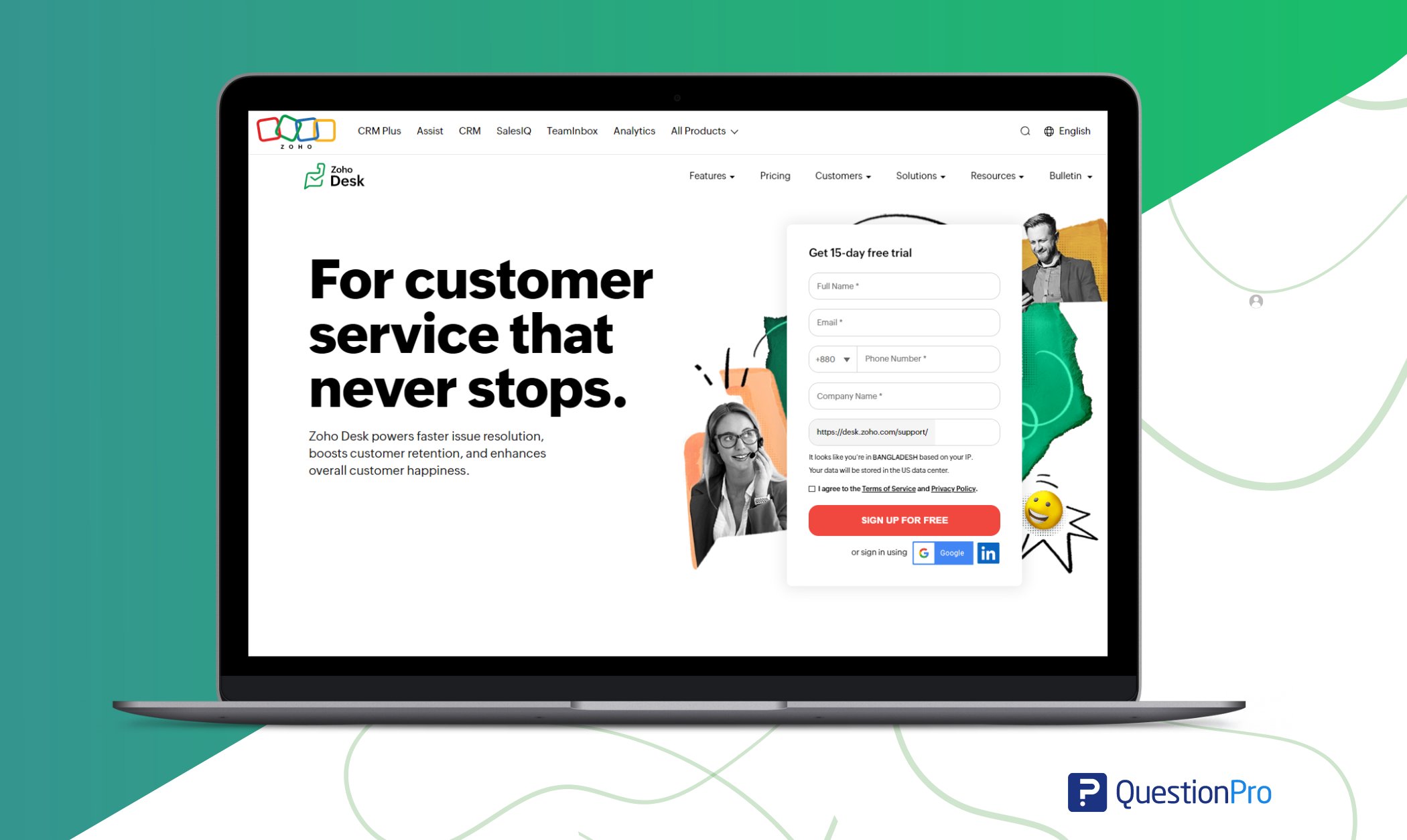
Features:
- Ticketing system for customer support
- Knowledge base management
- Multi-channel support (email, phone, chat)
- Automation and workflows
- Reporting and analytics
Pricing: Pricing starts at around $14 per user per month for the Basic plan, with higher-tier plans available for advanced features and larger teams.
These platforms present various features to help businesses understand, analyze, and improve customer experiences across various touchpoints and channels. Each software solution may have unique strengths and capabilities, so it’s essential to evaluate them based on your specific business requirements and goals.
Check out our latest blog at QuestionPro to learn more about Customer Loyalty Software. It’s packed with useful info to help you boost customer loyalty!
Why QuestionPro can be your best option as your next CEM Software?
QuestionPro can be the perfect choice for businesses seeking a Customer Experience Management (CEM) solution for several reasons:
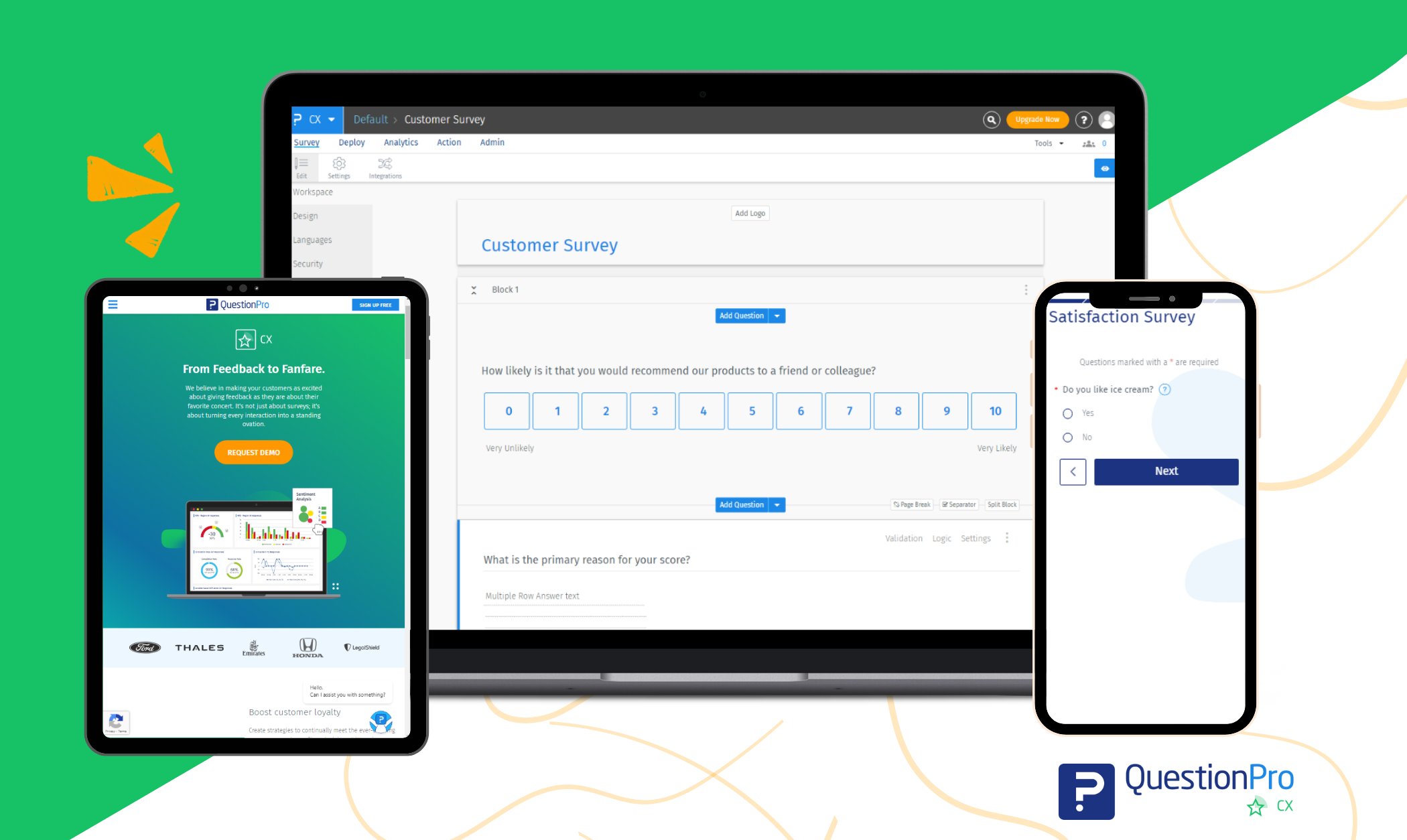
Versatile Feedback Collection:
QuestionPro offers various tools for collecting feedback through surveys, polls, forms, and more. This versatility allows businesses to gather insights from multiple touchpoints and channels, providing a holistic view of the customer experience.
Advanced Analytics:
The platform provides robust analytics and reporting features, allowing businesses to derive meaningful insights from customer data. From sentiment analysis to trend identification, QuestionPro empowers organizations to understand customer preferences and behaviors in-depth.
Customization and Flexibility:
QuestionPro offers extensive customization options, allowing businesses to tailor surveys and feedback forms to their needs and branding requirements. This flexibility ensures businesses can capture relevant data and insights aligned with their unique objectives.
Ease of Use:
With an intuitive interface and user-friendly design, QuestionPro makes it easy for businesses to create, distribute, and analyze surveys without requiring extensive technical expertise.
Integration Capabilities:
QuestionPro seamlessly integrates with various third-party applications and platforms, including CRM systems, email marketing tools, and analytics platforms. This integration capability enables businesses to streamline their CEM processes and leverage existing technology solutions investment effectively.
Scalability:
Whether you’re a small startup or a large enterprise, QuestionPro can scale to meet your evolving needs. The platform offers scalable pricing plans and features, ensuring businesses can expand their CEM initiatives as they grow without facing limitations or constraints.
Overall, QuestionPro combines powerful features, ease of use, customization options, and scalability, making it a compelling choice for businesses looking to enhance their customer experience management efforts effectively.
Conclusion
Customer Experience Management (CEM) software is a vital tool for businesses striving to understand, analyze, and improve customer interactions. Moreover, these platforms facilitate the seamless collection of feedback, sentiment analysis, journey mapping, and predictive analytics, enabling businesses to drive enhanced satisfaction, loyalty, and long-term success.
As customer expectations continue to evolve in today’s competitive landscape, investing in CEM software is essential for businesses looking to stay ahead. By prioritizing the customer experience platform and leveraging the capabilities of CEM software solutions, organizations can foster stronger relationships with customers, differentiate themselves in the market, and ultimately achieve sustainable growth and success.
CEM software (Customer Experience Management Software) is a suite of tools and technologies that companies use to manage and optimize customer interactions. It can include features like customer data collection, analysis, and action. The general objective of this type of tool is usually to understand and improve the overall customer experience.
CEM focuses on the overall customer experience across all interactions, aiming for satisfaction and loyalty. CRM manages individual customer relationships, aiming for personalized interactions and increased sales.
The purpose of CEM:
1. Enhancing overall customer satisfaction.
2. Building long-term customer loyalty.
3. Identifying and addressing pain points in the customer journey.
4. Creating memorable and positive customer experiences.
5. Improving brand perception and reputation.
6. Increasing customer retention and advocacy.







